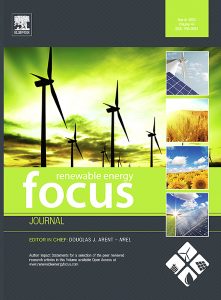Check out our new publication “The attractiveness of syngas production from forest-based biomass for pulp mills considering carbon pricing and government regulations” in Renewable Energy Focus.
You can access and download this article for free before July 05, 2023, on ScienceDirect. No sign-up, registration, or fees are required.
Please cite this article as:
Sahar Ahmadvand, Taraneh Sowlati, The attractiveness of syngas production from forest-based biomass for pulp mills considering carbon pricing and government regulations,
Renewable Energy Focus, Volume 45, 2023, Pages 287-306, ISSN 1755-0084, https://doi.org/10.1016/j.ref.2023.04.007.
Abstract: While transition to renewable energy and cleaner technologies has been promoted by many governments around the world through incentives and subsidies, some renewable projects fail due to various reasons. Investigation into these reasons would benefit current and future projects. This study focuses on the renewable project of producing syngas from forest-based biomass at a Kraft pulp mill to displace natural gas that fuels their lime kiln. We build on the feasibility study done for the same project by Khadivi and Sowlati [45], who showed despite having a positive net present value and a three-year payback period, the syngas price and escalating carbon tax would result in negative cashflows halfway through the project’s lifetime. This was unacceptable by the pulp mill. Regardless of financial outcomes, the project could benefit from valorization of abundant biomass supply through a gasification technology with acceptable readiness level while providing emission reductions, diversified product portfolio, additional revenue, and employment opportunities. Thus, further investigation is valuable to discover the possible changes in syngas or carbon price that would make this project acceptable. In this paper, an optimization model is developed that determined a syngas price of 27.5 ($ per GJ) increasing by $0.49 every year would be optimal as it makes all cashflows positive while minimizing the total syngas purchase cost for the gas utility. Also, to improve the syngas supply chain efficiency, a bi-objective optimization model is presented that maximizes the savings in costs and emissions when prescribing optimum monthly procurement, storage, and preprocessing decisions.
Keywords: Renewable natural gas; Carbon pricing; GHG emissions; Gasification; Optimization; Supply chain management

